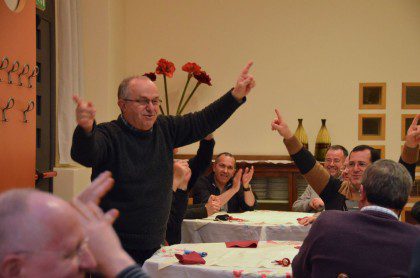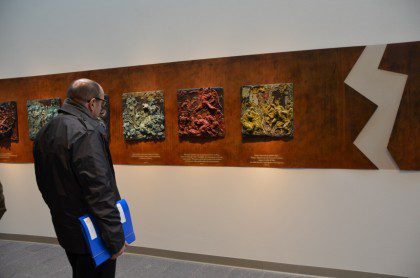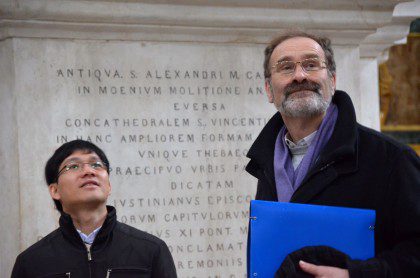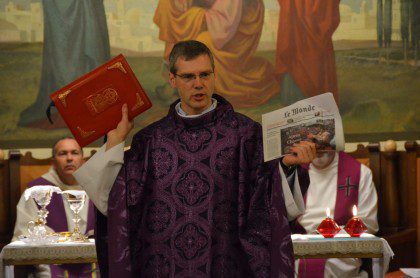
What does it mean to be an SCJ today?
For several years SCJs in Europe have been asking themselves different versions of the same question. Basically, what does it mean to be a Dehonian in Europe today?
What is it that Dehonian spirituality can address? Is there a future for Sacred Heart devotion in Europe?
What does it mean to be a religious in a world that seeks spirituality but often shuns the language traditionally used to discuss it?
In October, 2011, European SCJs met in Clairefontaine, Belgium, to reflect on secularity and the changing role of faith and religion in the western world. Instead of being the underlying foundation of European culture, in many places, religion has now become just one of many spheres in society.
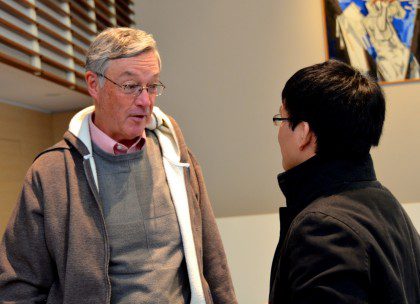
The discussions of Clairefontaine were continued at the European major superiors meeting March 4-8 in Albino, Italy. Coupled with them was a renewed reflection on Vatican II and the council’s call to a new way of being in the modern world.
“The Heart of Christ in the Future of Europe,” was the title of the conference that included the major superiors and delegates of 14 European entities, the U.S. Province, and the General Curia. Approximately 35 SCJs were present.
Once again Dehonians asked themselves, “What does it mean to be a Dehonian in Europe today? Can the Priests of the Sacred Heart be relevant in modern society?”
Albino was a fitting location to discuss the future of the congregation for it was in Albino, over 100 years ago, that the Priests of the Sacred Heart began its first community in Italy.
With the history of the congregation in southern Europe as a backdrop, SCJs reflected on the future and their response to the modern world.
Artists as prophets
Each of the three full days of the gathering had a theme. On Tuesday it was aesthetics, or the role that arts can play in the post-modern world. How they can be a vehicle to break through toward the transcendent?
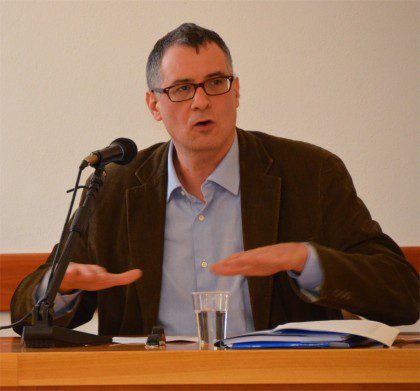
Participants visited the Associazione Arte e Spiritualità in Concesio, the birthplace of Pope Paul VI, one of the two popes of the Vatican II era. The gallery holds an extensive collection of modern art, an art form close to the heart of the pope.
Pope Paul VI found in artists another way of bringing the message of Christ to the people
“The Church has long since joined in alliance with you [artists],” said Pope Paul VI in his closing comments at Vatican II. “You have built and adorned her temples, celebrated her dogmas, enriched her liturgy You have aided her in translating her divine message in the language of forms and figures, making the invisible world palpable.”
Not only did Pope Paul VI appreciate the role of artists, he embraced modern art as a way to communicate Christ’s relevance to the contemporary world.
Tuesday afternoon the aesthetics of faith were linked with SCJ spirituality through a presentation by Marcello Neri. Dehonian spirituality, he proposed, has the potential to contribute to the reconfiguration of Christianity in contemporary Europe. God might not be evident in society in the same way as in the past, but God continues to permeate every aspect of life. However, to see and experience this, one needs to move away from the intellect to an imaginative and experiential way of knowing, a way of seeing Christ –– and faith –– hidden in the everyday corners of the modern world.
Devotions today
Moving from Tuesday’s focus on the aesthetic aspects of the spirituality of the Sacred Heart, participants spent Wednesday reflecting on the role of devotions. In the morning they boarded a bus to Bergamo, the birthplace of Pope John XXIII, where they heard a presentation on the lifelong significance of devotions in the pope’s life.
In the afternoon, the focus was on Sacred Heart devotion. Fr. Fernando Rodrigues da Fonseca spoke of the devotional aspects of Sacred Heart spirituality. He noted that Pope John XXIII was consecrated to the Sacred Heart on the day of his baptism. During his diaconate retreat he wrote that “Devotion to the Sacred Heart has accompanied me all of my life.” It was something that he hoped would be a “thermometer of all my spiritual progress.”
Fr. Dehon was of a similar spiritual mindset, saying the Sacred Heart was more than simply a devotion but a means toward a “renewal of Christian life.”
The Church in Europe needs a new spirit, a new life, said Fr. Fernando, “that can only be found through an intimate encounter with the Heart of Jesus.”
Reflecting on what they heard, participants talked about devotion as it is practiced today and how it could look in the future.
Since the Second Vatican Council many Catholics turned away from devotions as an out-dated form of religious expression, a quaint tradition that lost its place in the modern world.
Yet there is a place for sentiment in faith, even in a culture dominated by secularity. Devotion is a way to connect the heart and the mind. It is dynamic, not static. It is rooted in liturgy, not separate from it.
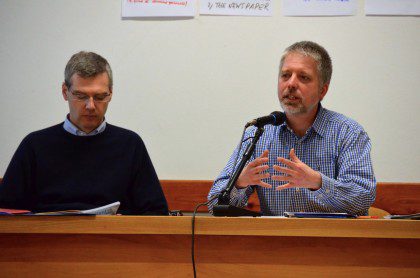
The social commitment of Fr. Dehon
Fr. Stefan Tertünte of the German Province set the tone for the third day of the conference with his presentation, “The Social Commitment of Fr. Dehon in His Time, Understood in Our Days.”
Much of what SCJs know about Dehon comes from his writings. But it is in his actions, his commitment to the social concerns of his day, that really define the founder’s interpretation of the Sacred Heart. As Fr. Fernando noted, it was a spirituality that didn’t discard devotion, but moved from it to action. It was what inspired Fr. Dehon to tell his priests to “get out of the sacristy and go to the people.”
Vatican II, said Fr. Stefan, deepened that call, urging the Church to be a part of the world, to be in dialogue with it.
“Sint Unum” was not just a catch phrase for Fr. Dehon. Today, in a fragmented European society, the call to Sint Unum continues to be relevant, if not essential.
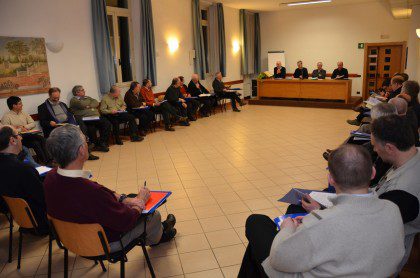
Responding to the new faces of poverty in Europe
During their final small group discussions SCJs talked about what Fr. Stefan presented, as well as the prior days’ experiences. In doing so they reflected on the following:
“In the context of the new faces of poverty and inequality in Europe, what can we, as Dehonians, do?
It was a step closer to answering the question: “What does it mean to be a Dehonian in Europe today?”
Europe is not one homogenous reality. There are differences between countries, but more so, between eastern and western Europe.
“There is unimaginable material poverty in Eastern Europe,” said one of the Polish SCJs. “When we speak of the poor, it is in a much different context in eastern Europe.”
The practice of religion is also different. While secularity is a strong force in much of the continent, devotions and other religious traditions continue to be a part of the faith and culture of many eastern European countries.
The specifics of how the Dehonian charism is lived will be different in each place. But just as Fr. Dehon took to action to address the issues of his time, so too must SCJs today.
However, the charism from which these actions are based is the same. It is a charism that calls Dehonians in Europe to listen with open ears and see with fresh eyes, to find God and faith in the modern world and to help others find it as well. It is a charism that continues to bring the love of the Sacred Heart to all.
The love of the Sacred Heart is not dead in Europe. It is simply found and shared in new places, in new ways.
What does it mean to be a Dehonian in Europe today? It continues to be a call to “get out of the sacristies and go to the people,” to be in solidarity with others following the spirituality ignited by Fr. Dehon.
Click below to read the final statement of the conference:
Click on the following links to view photo albums from the days.
